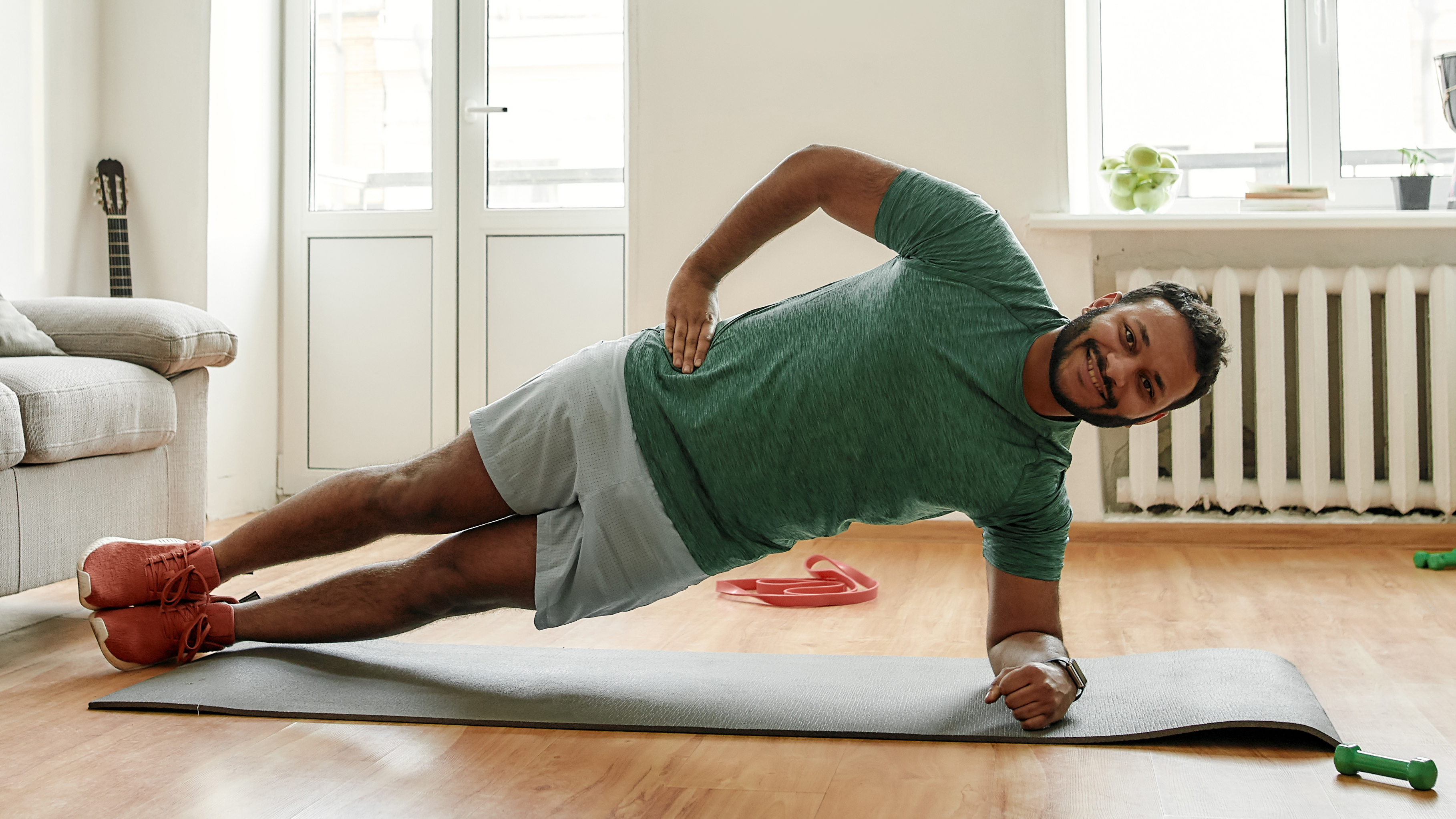Swap planks for five more functional core exercises, as cherry picked by a certified trainer
Bored stiff by planks? Grab a dumbbell and spice up your core routine with this 15-minute workout

Ever since training for and completing the London marathon two years ago, Jess Pritchard has been left with a nagging feeling that's been hard to shift.
“What started as a small niggle in my lower back turned into a persistent issue day-to-day,” the certified trainer and group exercise instructor tells Fit&Well.
An imbalance between her left glute, lower back and core became exacerbated by training and teaching Spin classes until the only option was to stop.
“Over time I realized I needed to rebuild the strength and control around my spine, pelvis and core,” she says. And plank exercises wouldn’t cut it.
“Planks are great for building baseline strength,” she continues. “They are really spine safe, so a great beginner core exercise that you can make harder with progressions.”
They are, however, static. As Pritchard points out, your core is called upon during all kinds of movement, like running, lifting, going up the stairs and getting up from sitting. To train the core properly, you need to reflect this multi-functional nature.
Going back to the drawing board, Pritchard devised a five-move core routine she now credits as restoring balance to her core and pelvis.
Start your week with achievable workout ideas, health tips and wellbeing advice in your inbox.
Instead of simply isolating muscles in a static pose like a plank, these combinations teach the body to move as one unit.
“These exercises train dynamic control and teach your body to resist unwanted motion,” she says.
“They bridge the gap between abs training and real-life movement. That has been key in reducing my pain, and helping me feel strong and able, and confident in moving.”
Strengthen your core with this five-move routine
A post shared by JESS PRITCHARD | self love & fitness (@pritchard_jess)
A photo posted by on
Pritchard admits that these exercises are “fairly intermediate to advanced” but that you can make them more beginner-friendly by using a lighter weight or just your own bodyweight.
“Go slow and aim for precision,” she says. “The goal is to not rush but to build solid core foundations that actually support you long-term.”
This five-move core workout can be performed as a standalone workout or the moves can be used for a finisher at the end of your regular session.
Pritchard recommends performing three sets of each exercise, working for 40 seconds, then resting for 20 seconds.
“Sprinkle these across your week and keep repeating them for six weeks,” advises Pritchard.
1. Weighted deadbug
Sets: 3 Time: 40sec Rest: 20sec
- Lie on your back and hold a light dumbbell in both hands above your stomach.
- Lift your legs and bend you knees, so your calves are parallel to the floor.
- Lift your upper back to engage your abdominal muscles, while pressing your lower back into the floor.
- Maintaining this position, lower and extend each leg, alternating sides.
“Deadbugs help build pelvic and core stability,” says Pritchard.
“To make this move easier, scrap the dumbbell and perform a bodyweight deadbug. Extend one arm and the opposite leg away from your body, then back to the center, then switch sides.”
If you find this tricky too, have a look at these beginner-friendly dead bug modifications.
2. Side plank hip lift
Sets: 3 Time: 40sec each side Rest: 20sec
- Lie on your right side, with your torso propped up on your forearm, with your elbow directly under your shoulder, and your left foot on top of your right foot.
- Lift your body to form a straight line from your head to your feet.
- Keep your other arm by your side or stretched toward the ceiling.
- Slowly lift and lower your hips.
“These target the oblique muscles that run down the side of your abs, helping build lateral core stability,” says Pritchard.
“Make it easier by simply holding a side plank for the full 40 seconds, rather than pulsing your hips up and down.”
3. Weighted sit-up to overhead reach
Sets: 3 Time: 40sec Rest: 20sec
- Sit on the floor with your legs extended in front of you.
- Hold a dumbbell in both hands overhead.
- Engage your core and slowly lower your torso to the floor, keeping your arms vertical.
- Use your core to lift your torso back to the starting position.
“Adding a weighted overhead element to this sit-up forces your core and shoulders to work together to maintain a strong posture,” says Pritchard.
“Ditch the weight to make it more beginner-friendly, but keep your arms outstretched to learn the technique.”
4. Kneeling wood chop
Sets: 3 Time: 40sec each side Rest: 20sec
- Adopt a half-kneeling position with your left knee on the floor and your right foot flat on the floor in front of you, holding a dumbbell in both hands by your left hip.
- Engaging your core and, keeping your arms straight, lift the dumbbell diagonally up across your body, rotating your torso.
- Keep your eyes fixed on the dumbbell throughout.
- Slowly lower the weight to the start.
“Performing this move from kneeling increases the demands on all the core muscles, front and back, to stabilize your spine,” says Pritchard.
You can make it easier by replacing the dumbbell with a resistance band, attaching it to a sturdy anchor point and pulling it across your body in the same motion.
5. Overhead march
Sets: 3 Time: 40sec Rest: 20sec
- Stand holding a light dumbbell overhead in your right hand, with your left arm outstretched to the side to help with balance.
- March slowly on the spot, bringing one knee to hip height, then the other.
- After 20 seconds, switch arms.
“I love these for training good posture. They are particularly effective for runners and people who sit down a lot [who need] to resist slouching,” says Pritchard
“To regress it, hold a light dumbbell on your shoulder, rather than pressing it overhead.”

Sam Rider is an experienced freelance journalist, specialising in health, fitness and wellness. He is also a REPS level 3 qualified personal trainer.
You must confirm your public display name before commenting
Please logout and then login again, you will then be prompted to enter your display name.
